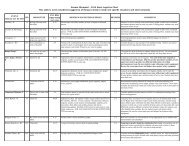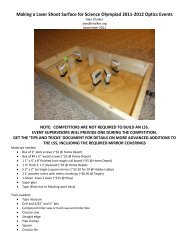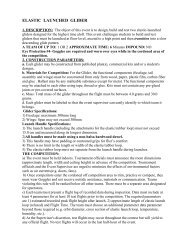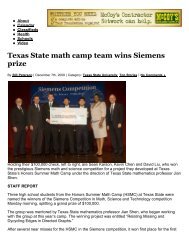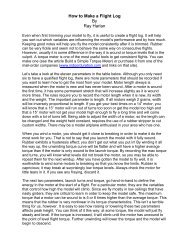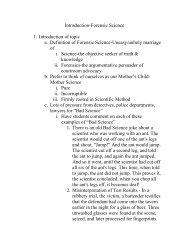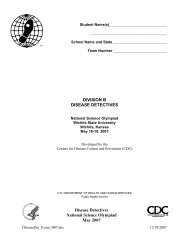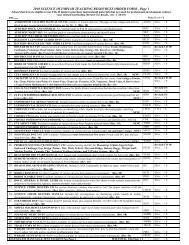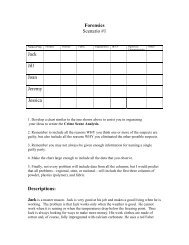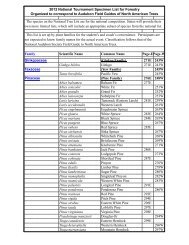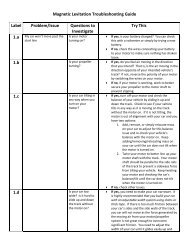Straw Tower Challenge - Science Olympiad
Straw Tower Challenge - Science Olympiad
Straw Tower Challenge - Science Olympiad
Create successful ePaper yourself
Turn your PDF publications into a flip-book with our unique Google optimized e-Paper software.
STRAW<br />
TOWER<br />
CHALLENGE<br />
STRAW TOWERS<br />
DESCRIPTION:<br />
To build the tallest tower out of 50 straws<br />
that will hold a designated load for 3 seconds.<br />
NUMBER OF PARTICIPANTS: 5-6<br />
APPROXIMATE TIME:<br />
120 minutes total over two weeks<br />
MATERIALS PROVIDED:<br />
Optional Materials:<br />
Scissors and a pencil; additional load items<br />
50 drinking straws, masking tape, tennis ball, measuring tape<br />
Event Parameters:<br />
1. The tower must be constructed using only the drinking straws and masking tape. There will be enough<br />
materials to build 3-5 towers.<br />
2. The straws can be interconnected directly by sliding one end into another straw. <strong>Straw</strong>s may be bent,<br />
cut or slit.<br />
3. Students may not completely cover their structure with masking tape as reinforcement; tape is used<br />
at joints only. Tape may not be used to secure the tower to a table, base, ceiling or surface. You may<br />
not make a leg, brace, cone or column out of tape.<br />
4. The tower must accommodate a standard tennis ball. The student must be able to balance the ball on<br />
the tower at the loading point for the tower to qualify.<br />
Measuring Your Achievement:<br />
1. Remember to measure your tower height before loading.<br />
2. The height of the tower will be measured again once the tennis ball is placed on the structure. Use a<br />
flat surface to test the structure.<br />
3. The tower that supports the load at the highest point is ranked first. If the tower does not support<br />
the load, it will be ranked BELOW the tower that did support the load based on tower height.<br />
4. Once you have collected the data on your schools’ towers please visit the Chicago <strong>Science</strong> in the City<br />
website and enter the data from the top 3 towers. In addition, pictures can be submitted by following<br />
the instructions posted at the site.<br />
The <strong>Science</strong> Behind Structures:<br />
1. Instructions for Teachers - Lists National and Illinois Standards alignment and tips for using this lesson plan.<br />
2. Extension Activities - Optional extensions for students.<br />
3. Implementation Schedule - A two-week calendar with suggested daily activities.<br />
4. <strong>Tower</strong> Log - Record observations and plan, design and evaluate your structure.<br />
5. <strong>Tower</strong> Sketch - A grid to plan your team’s design.<br />
6. Basic <strong>Tower</strong> Design - Covers legs, columns and bracing.<br />
7. Simple Structures - How shapes like triangles and squares form the parts of a tower.<br />
8. Analysis of Structures and Joints - Tips and engineering terms for joining your straws.<br />
Resources:<br />
<strong>Science</strong> in the City Homepage http://www.chicagoscienceinthecity.org/<br />
University of Illinois at Urbana-Champaign College of Engineering http://www.engr.uiuc.edu/<br />
Chicago Architecture Foundation http://www.architecture.org/<br />
<strong>Science</strong> <strong>Olympiad</strong> Home Page http://www.soinc.org/<br />
You may copy all of these<br />
pages for school use.<br />
PAGE - 1



